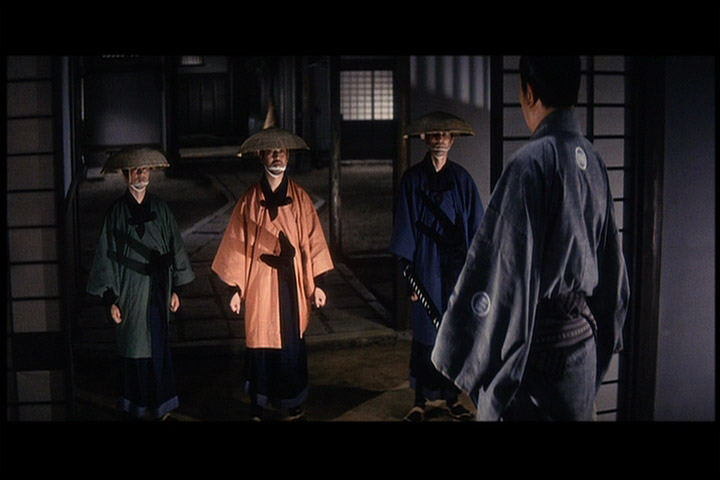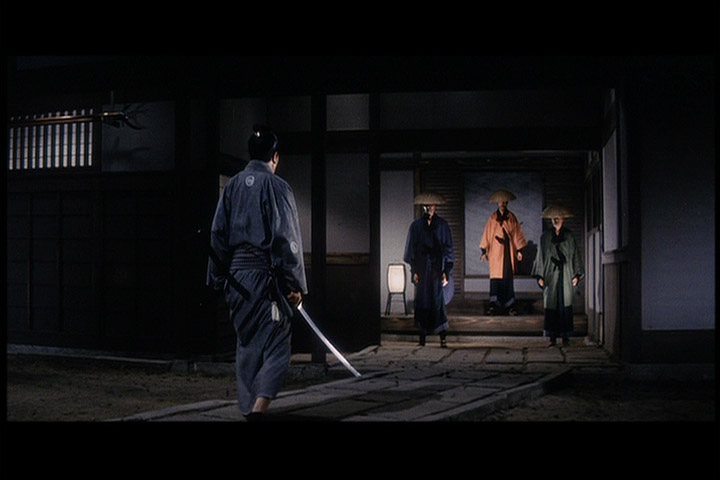
Masaki Kobayashi: Harakiri, Samurai Rebellion, The Human Condition
Kwaidan is one of the finest assemblages of love, longing, terror and regret I have ever seen. Break it down:
Kwaidan (1965)
Masaki Kobayashi: Harakiri, Samurai Rebellion, The Human Condition
Kwaidan is one of the finest assemblages of love, longing, terror and regret I have ever seen. Break it down:

Story One (Black Hair): Great story. Compelling. The immediate decision of the samurai to leave his young wife seemed a bit rash. But isn’t that always the way?
Eerieness: permeating
Sound Suspense: tick tock it doesn’t stop
Color: natural
Loss and Longing: unparalleled
Applicability: wide
Story Two (The Woman in the Snow): Something is done to a man for no apparent reason. In George Sluizer’s The Vanishing, a loved one is taken away. In “The Woman in the Snow,” a strange secret must be kept, or rather honored. In both films, the man has a choice. He can either let it go, or he can let it torture him to madness. In The Vanishing, Rex would have done better to have gotten over his obsession. In Kwaidan the man is punished for doing just that. Taken together, the combined lesson is “damned if you do, damned if you don’t.”
Eerieness: sporadic
Sound Suspense: the melody haunts my reverie
Color: epic, blue and amber like jewels in the desert
Loss and Longing: like the middle of Solaris
Applicability: ghost women are hot as shit
Story Three (Hoichi: The Earless): It is interesting to see the gentle delicacy with which the two paternal monks approach the young monk’s strange behavior. Quite a contrast to the stereotype of rigid Japanese discipline. Perhaps the message here is “spare the rod, the child will turn a sort of blueish-gray color.” Whether you believe Hoichi is touched by evil or just led astray, the guy’s certainly on a mission. And it makes things like rain, and even a lack of sight, irrelevant. The two bumbling idiots hired to spy after him (terrified of rain, noises, everything) recall the two peasants in Akira Kurosawa’s Hidden Fortress (also known as R2D2 and C3PO). Question: Why do the Heike clan ghosts want to keep hearing the story of their own demise again and again? Look, they lost. They’re dead. They need to get over it. And I wonder if the ending didn’t give Miyazaki his idea for Spirited Away, in which the dead spirits are drawn to the bath house night after night in what amounts to a sort of ritualistic celebration of their own deadness. Like I said, get over it, or get scrubbed down nightly by some pre-pubescent hot Japanese chicks—wait—
Eerieness: solid
Biwa Playing: beyond reproach
Color: blue turning gray over you
Mural Scrolling: Andrei Rublific
Applicability: Um, yeah
Fourth Story (In A Cup of Tea): Orange, blue and green. The spiral into madness makes my heart flutter.
Eerieness: delayed
Biwa Playing: choreographic
Color: retained
Mad Laughter: plenty
Applicability: Ringu, I love you yeah, yeah, yeah

Exit Interview from Kwaidan:
Q: The outdoor sets remind me of the second act in Full Metal Jacket Is that okay?
A: Yes.
Q: I don’t get it. How are the four stories inter-related?
A: Yes.
As you watch each story in Kwaidan, you learn certain things. For example, the more attractive the girl, the more likely she is to be from another world. Also, eerie sounds are bad. Storms? Bad. Doors swinging open on their own—you guessed it, bad. And so the way it works is you learn these rules, which the film then uses to build suspense and terror. Almost paradoxically, therefore, the more you know, the more control the film has over you. All horror films do this, only the Japanese do it better.
| Movies Home |